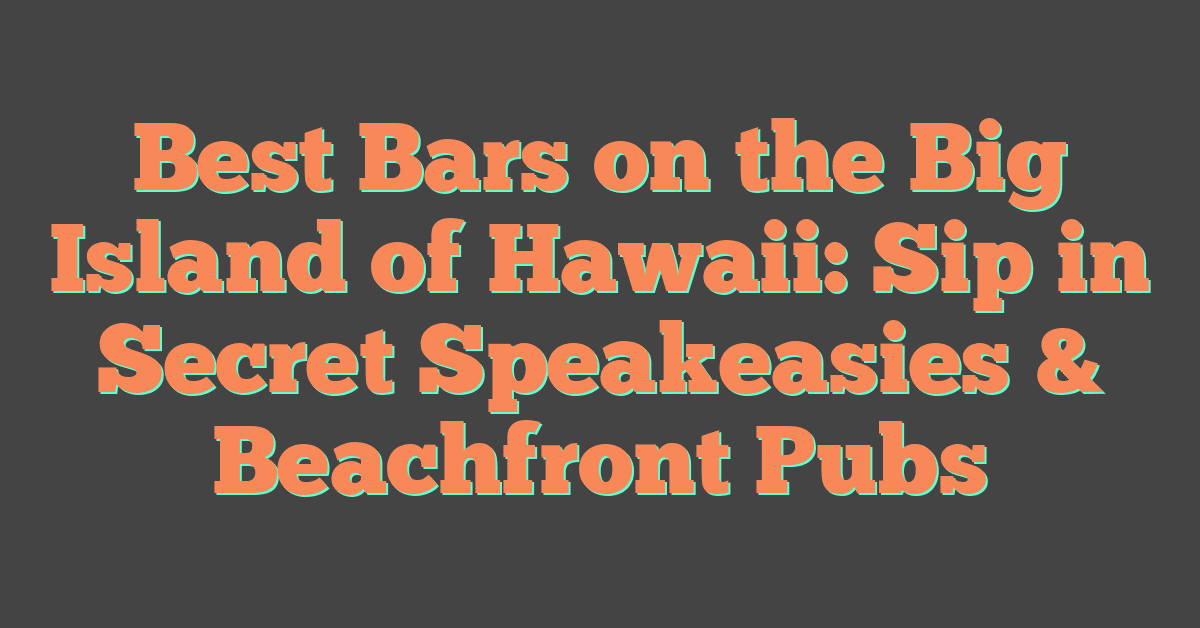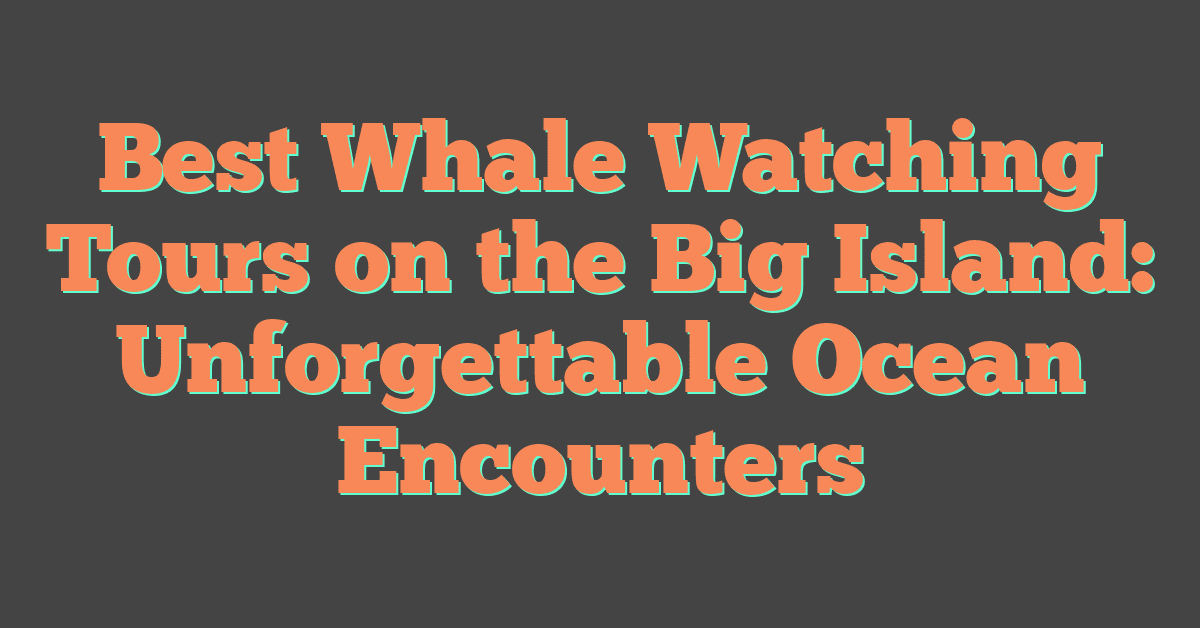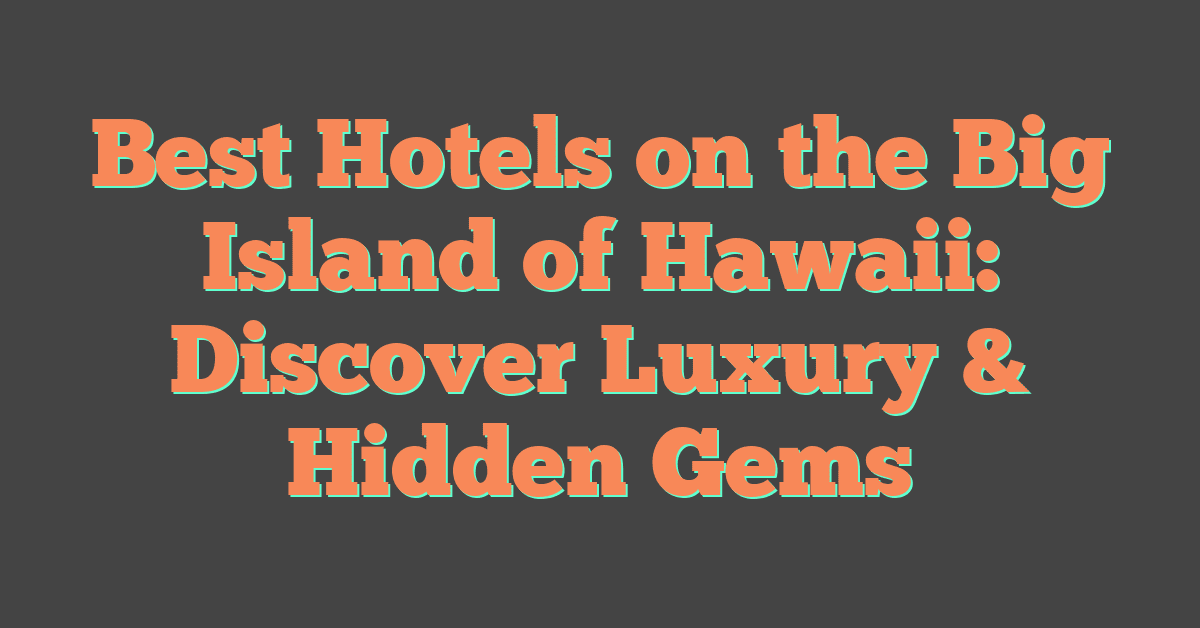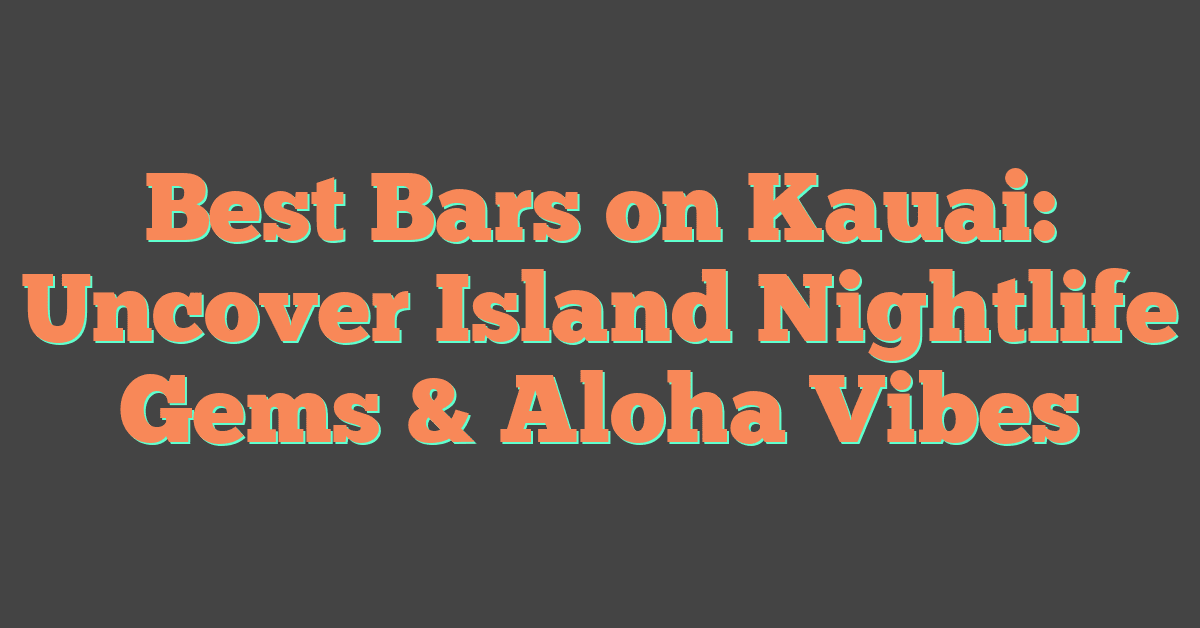There’s something special about planning a trip to Hawaii that goes beyond the beaches and sunsets. If I want to experience the real culture and rhythm of the islands, I plan my trip around one of Hawaii’s unique festivals.

Each festival brings local traditions, food, music, and community spirit to life in a way nothing else can.

When I choose my travel dates thoughtfully and consider logistics and weather, I join amazing celebrations like the Aloha Festivals. These events give me a deeper connection to the people and history of Hawaii.
I love how these festivals fill my trip with memorable moments, authentic flavors, and stunning performances. There’s always something happening, whether I’m into parades, local foods, or even cowboy (paniolo) culture.
If you want to make the most of your Hawaii adventure, plan around cultural festivals and events.
Understanding Hawaiian Festivals
When I plan my travel around festivals in Hawaii, I find it helps to know what makes each event special. These celebrations highlight local customs and connect me with the unique spirit of each island.
Overview of Festivals in Hawaii
Festivals in Hawaii happen all year and feature lively parades, music, food, and dance. Some of the most famous events, like the Aloha Festivals, let me experience hula performances, floral parades, and traditional foods up close.
Communities from across the islands gather each year to celebrate Hawaiian heritage. Each festival tells a story.
For example, the Merrie Monarch Festival in Hilo honors King David Kalākaua and focuses on hula. Other festivals celebrate music, crafts, and paniolo (Hawaiian cowboy) culture.
Whether I visit Oahu, Maui, Kauai, or the Big Island, I always find a reason to celebrate. If I want insider tips about when and where the main events are, I check local calendars.
Many celebrations offer family-friendly activities and street fairs. These make it easy for visitors to join in.
For a detailed guide, I use resources like Go Hawaii.
Importance of Hawaiian Culture and Traditions
Hawaiian festivals are more than just fun—they show living Hawaiian culture and traditions. Hula dancing stands out as both entertainment and history.
Each movement in hula shares legends and stories from the past. Music and chants, or mele and oli, play a key role too.
These art forms connect the present to ancestors and show respect for the land and sea. Many events include blessing ceremonies and the sharing of lei.
Lei are handmade garlands that show love and respect. By joining these cultural celebrations, I learn about customs that locals have practiced for generations.
It’s important to show respect and take part with an open mind. Exploring arts, crafts, and local foods helps me understand the vibrant culture and strong sense of community found across the islands.
Regional Differences Across the Hawaiian Islands
Each Hawaiian island celebrates in its own way. Oahu is known for large, city-style parades and the famous Aloha Festivals street party.
These events are bustling and colorful, with hundreds of dancers and floats. Maui and Kauai often host smaller, community-driven festivals.
I like the relaxed feel there, where local arts and foods are easier to enjoy close up. Big Island events highlight traditional crafts, like canoe races and hula competitions at the Merrie Monarch Festival.
The table below shows a few key differences:
| Island | Event Example | Focus |
|---|---|---|
| Oahu | Aloha Festivals Parade | Parades, street fairs |
| Maui | Hana Cultural Festival | Music, crafts |
| Kauai | Waimea Town Celebration | Food, heritage |
| Big Island | Merrie Monarch Festival | Hula, traditions |
When I travel, I pay attention to these regional differences. They help me choose the best time and place to experience the customs and spirit unique to each island.
For a comprehensive festival guide, I check Real Hawaii Tours for event details.
Popular Festivals To Experience
Each island in Hawaii offers its own special events and traditions. I find that these festivals are a great way to explore culture, enjoy tasty foods, and connect with local communities.
Aloha Festivals and Floral Parade
The Aloha Festivals are some of the most colorful celebrations I have seen in Hawaii. They happen every September on Oahu, with events like the famous Floral Parade.
This parade features decorated floats, marching bands, and groups wearing bright Hawaiian attire. The Aloha Festivals include traditional music, dance performances, and tasty local food.
I always check the event schedule because it also features the Royal Court Investiture and the Waikiki Hoolaulea, a big street party for all ages. For the parade, I arrive early to pick a good viewing spot along the main route in Honolulu.
The event draws crowds, with many people wearing fresh plumeria or orchid leis. It’s important to respect customs and enjoy the beauty of the flowers, music, and dancing.
For more details, visit this list of top Hawaiian cultural festivals.
Merrie Monarch Festival and Hula Competition
The Merrie Monarch Festival in Hilo is one of the most famous hula events in the world. Each April, the week-long festival honors King David Kalākaua, who loved Hawaiian music and hula.
The hula competition brings together groups from across the Hawaiian Islands to perform both ancient (kahiko) and modern (auana) hula styles. Judges look for skill, storytelling, and traditional costumes.
These dances are a powerful way to experience Hawaiian history. There are other cultural activities too, like art fairs and Hawaiian craft workshops.
If you want to see top performers and learn about the meaning of hula, this festival is a must. You can learn more about this festival’s schedule and activities at the official Merrie Monarch Festival site.
Honolulu Festival and Cultural Events
Every March, I look forward to the Honolulu Festival, which celebrates the cultures of Hawaii, Asia, and the Pacific. This event brings together people from many backgrounds for three days of dance shows, music, and food.
The festival features a lively parade, Japanese taiko drumming, and colorful craft booths. I love watching the Bon dance and learning about different traditions.
Many performances happen in Waikiki, so they are easy to reach. Some years, the King Kamehameha Celebration and Kamehameha Festival happen at the same time, adding extra excitement to the city.
The Honolulu Festival ends with a big fireworks show over Waikiki Beach. For a list of Hawaii’s best festivals, including the Honolulu Festival, check out this collection of top Hawaii festivals.
Unique Events Across the Islands

Hawaii hosts many special events that share the islands’ culture, food, and history. By learning about these unique festivals, I can figure out the best time and place to visit for each one.
Festivals in Oahu: Waikiki Hoolaulea and More
Oahu is home to some of the biggest and brightest celebrations in Hawaii. When I visit Waikiki during the Aloha Festivals, I join the crowds at the Waikiki Hoolaulea.
This street party fills Kalakaua Avenue with live music, hula, traditional foods, and local crafts. People of all ages come together to sing and dance.
In Honolulu, the King Kamehameha Celebration Parade stands out. Colorful floats and marching bands fill the streets.
I enjoy watching the royal court in traditional dress and seeing the vibrant lei draped on Kamehameha’s statue. Each September, the Aloha Festivals in Oahu turn the city into a lively center of Hawaiian pride and heritage.
For more details about Oahu’s events, see this guide on experiencing Hawaii festivals.
Maui Highlights: Maui Film Festival and East Maui Taro Festival
On Maui, I look forward to a different vibe. The Maui Film Festival draws movie lovers and celebrities to watch films under the stars.
It often takes place at outdoor venues around Wailea, where I can enjoy special screenings and panel talks. Food tastings at the events let me sample dishes from top chefs as I mingle with locals and visitors.
The East Maui Taro Festival in Hana gives me a chance to taste taro-based foods and see traditional farming practices. Music, lei making, and hula create a family-friendly atmosphere.
Local farmers and artists share stories and their crafts. This festival is a perfect place to learn about native Hawaiian plants and culture.
Big Island Experiences: Kona Coffee Cultural Festival and Hilo Merrie Monarch
On the Big Island, the Kona Coffee Cultural Festival celebrates everything about Kona coffee—the planting, harvesting, roasting, and brewing. I tour coffee farms, sample brews, and meet farmers who have grown coffee for generations.
Events like coffee tasting contests and art shows let me dive deeper into this signature Hawaiian crop. Check this list of top Hawaiian festivals for more ideas.
In Hilo, the Merrie Monarch Festival is famous for its hula competition. Groups from all over Hawaii come to perform.
The parade, craft fairs, and free music events attract thousands of visitors. This festival is a wonderful chance to experience the true spirit of Hilo and Hawaiian dance culture.
Special Celebrations in Other Islands
Beyond the major islands, there are more local celebrations I can plan around. On Kauai, the Waimea Town Celebration spotlights paniolo (cowboy) traditions, music, and canoe races.
I enjoy watching the rodeo and joining the block party in Waimea’s small town streets. Lanai has annual pineapple festivals where I learn about the island’s history as a pineapple plantation.
The Molokai Ka Hula Piko event focuses on the birthplace of hula, with ceremonies and performances at sacred sites. Each festival offers me a direct connection to local traditions and friendly communities.
For unique island events, I use festival calendars like this one featuring unique Hawaiian festivals and events.
Planning Your Trip Around Hawaiian Festivals

When I plan my Hawaiian trip around festivals, I want to maximize my cultural immersion. I also want to enjoy the islands’ stunning beaches, hikes, and food.
The timing, booking, and organizing of activities are all key for a comfortable and immersive experience.
Best Times to Visit for Festival-Goers
I always check the festival calendar before I book my trip. Many exciting festivals take place in spring and summer, like the Merrie Monarch Festival in Hilo or the Honolulu Festival.
These events create a strong sense of the aloha spirit. Local music, dance, and parades fill Kalakaua Avenue with energy.
Fall and winter bring more options such as the Aloha Festivals and Hawaii International Film Festival. Each island celebrates in its own unique way, from Maui’s food-and-wine fests to Oahu’s large cultural parades.
I travel during the shoulder seasons in April, May, September, or October to avoid crowds and save money. These months still have smaller festivals and great weather.
I use the official Hawaii festival guide to help choose my dates.
Booking Accommodations and Transportation
Once I pick my dates, I book accommodations right away. Hotels in Honolulu, especially near festival spots like Kalakaua Avenue, fill up quickly during festival weeks.
Booking early helps me get better rates and more choices. I compare hotels, vacation rentals, and local guesthouses for a more authentic experience.
Some places offer festival packages. I usually rent a car to explore beyond the city, reach hidden beaches, or drive to smaller festivals.
If I stay in Waikiki or downtown Honolulu, I use local buses or shuttles during big events. Parking can be tight during parades, so I look for walkable options.
Building Your Itinerary: Festival and Activity Integration
After I choose my main festival events, I plan my itinerary to balance festival days with classic island activities. I list key performances, parades, and workshops I want to attend.
Many festivals offer hands-on experiences like lei making, hula lessons, or food tastings. On free days, I hike to waterfalls, visit beaches, or explore museums and cultural sites.
I check if nearby events fit my festival schedule. Here’s a simple table I use to organize my plans:
| Date | Festival Event | Other Activity | Location |
|---|---|---|---|
| June 10 | Hula Competition | Hike Diamond Head | Honolulu/Kalakaua Ave |
| June 12 | Parade | Beach Day | Waikiki Beach |
| June 13 | Lei Workshop | Museum Visit | Honolulu |
For inspiration, I explore lists of authentic Hawaiian festivals that promise a truly immersive experience.
Essential Cultural Experiences
Hawaiian festivals invite me to join vibrant traditions, from dance and music to crafts passed down for generations. Local artists, musicians, and cultural experts share their passion with visitors like me.
Hula Performances and Hula Lessons
Watching hula performances at a festival is one of my favorite activities. Hula dancers move with grace, telling stories of nature, legends, and history through dance.
The music, costumes, and chanting create a lively atmosphere. Many festivals also offer hula lessons for beginners.
I can join a short class, learn basic movements, and discover the meaning behind each gesture. Experienced hula instructors patiently guide everyone, young or old.
Here’s what I usually see at hula events:
- Group performances with traditional and modern hula styles
- Interactive lessons for festival goers
- Live music featuring drums and chanting
Learning hula gives me a deeper respect for Hawaiian culture. It’s more than just a dance—it connects me to stories and traditions.
Lei Making and Traditional Hawaiian Customs
Making a lei at Hawaiian festivals is both fun and meaningful. I use real flowers, leaves, and shells.
Skilled local artists show me how to thread and weave these materials using traditional methods. In lei making workshops, I learn why leis are important in Hawaiian culture.
Leis symbolize welcome, love, and respect. Creating my own lei helps me appreciate the time and skill involved.
Some festivals feature other customs, like coconut weaving or kapa (bark cloth) making. By joining these hands-on activities, I feel more connected to the island and its people.
Tips and event lists on experiencing Hawaii festivals help me find these workshops.
Ukulele and Slack Key Guitar Music
Live music fills the air at Hawaiian festivals. I hear the cheerful strumming of ukulele and the soulful sounds of slack key guitar everywhere.
These instruments are central to local music performances. The Hawaiian Slack Key Guitar Festival is a highlight for music lovers.
Artists perform traditional songs and share the history of slack key guitar, a unique Hawaiian fingerstyle. I often see ukulele players teaching basics to visitors.
When I join these lessons, I learn a few chords and simple songs. Festival performances feature both solo acts and group jams.
Even with no musical background, I find these workshops and performances welcoming and fun.
Savoring Hawaiian Cuisine at Festivals
When I visit Hawaiian festivals, tasting the food is always a highlight. Fresh flavors, traditional recipes, and local talent make every meal memorable.
I get to try authentic dishes and explore creative menus from talented chefs and vendors.
Local Food and Signature Hawaiian Dishes
Sampling classic Hawaiian foods like poke, kalua pork, and poi is a must for me. These dishes are served at most festivals and show off the islands’ unique food culture.
- Poke: Fresh raw fish with soy sauce, sesame oil, onions, and seaweed.
- Kalua pork: Smoky, tender pork cooked in an underground imu oven, often served with cabbage or rice.
- Poi: Creamy, purple paste made from taro root, eaten with meat or fish.
I also find sweet treats like shave ice and malasadas. Local fruits like pineapple and mango add fresh, bold flavors.
At some events, volunteers demonstrate how they prepare traditional foods.
Food and Craft Vendors at Cultural Events
I love exploring festival food stalls and vendor booths. Meals, snacks, and handmade crafts give the festival a unique local flair.
I try grilled garlic shrimp, loco moco, spam musubi, or huli huli chicken. Local vendors set up food trucks and tents with fresh seafood, baked goods, and tropical drinks.
Many offer samples so I can taste a bit of everything. Craft vendors sell handmade jewelry, wood carvings, and woven baskets.
Meeting these artists helps me appreciate Hawaiian traditions. I often find one-of-a-kind souvenirs to bring home.
Hawaii Food and Wine Festival and Other Culinary Celebrations
The Hawaii Food & Wine Festival stands out as the largest culinary event on the islands. World-famous chefs, winemakers, and mixologists create unique menus from Hawaiian ingredients.
There are gourmet dinners, cooking demos, and tastings across several islands. Other events, like the Aloha Festivals, mix food with parades, music, and hula.
These celebrations let me taste everything from poke bowls to unique desserts. To learn more about these food experiences, I check guides like Tasting Aloha: A Guide to Unique Food Events and Festivals in Hawaii or browse lists of Hawaii’s best culinary festivals.
Arts, Activities, and Entertainment

There’s much more to do than just watch parades or shows. I enjoy unique art displays, outdoor movies, and even learn to surf at famous spots.
Art Exhibits and Cultural Activities
When I visit Hawaii during festivals, I explore the local art scene. Honolulu’s art galleries and studios open their doors to guests, featuring island artists and hands-on workshops.
The Arts at Marks Garage and Louis Pohl Gallery offer rotating art shows. I see everything from paintings to Hawaiian crafts.
Many festivals have pop-up exhibits and vendor booths. I can watch live lei-making demonstrations or try traditional arts myself.
I also visit local museums, which often have special programs and interactive activities.
Hula performances and music events are a big part of the festival experience. At events like the Aloha Festivals, I enjoy live music, try Hawaiian foods, and see arts and crafts from across the islands.
Film Festivals and Special Events
I like catching movies at the Maui Film Festival or Hawaii International Film Festival. These festivals screen local and international films I can’t see back home.
Movies play at special theaters, hotels, and even outdoors under the stars. Panels and Q&A sessions with filmmakers give me insight into the creative process.
Some festivals host themed nights or combine films with food and live entertainment. Special events can include art installations, music performances, or culinary showcases tied to film themes.
I always check ticket release dates and schedules since events can fill up fast.
Surfing, Street Parties, and Outdoor Fun
I’m drawn to outdoor activities during Hawaii’s festival season. Major surfing competitions like the Vans Triple Crown of Surfing let me watch top surfers ride big waves at Banzai Pipeline and Sunset Beach.
Hawaiian festivals often close streets for big parties with food stalls, music, and dancing. First Friday street parties in Honolulu are packed with live art, local vendors, and performances.
Luaus are a must. They combine great food, live music, and storytelling, helping me experience Hawaiian history in a lively setting.
Wherever I go, I check the event calendar so I don’t miss pop-up shows or outdoor concerts.
Tips for a Memorable Festival Experience

When I plan my trip for a Hawaiian festival, I keep a few things in mind. Being respectful of the culture, learning about the island, and supporting the environment and local businesses make my experience much more meaningful.
Connecting With the Spirit of Aloha
The spirit of aloha means showing kindness, respect, and welcoming others. I notice it right away when I join locals and visitors at a festival.
Smiling, saying hello, and sharing friendly greetings help me connect with the people around me. I take time to listen and stay open to new experiences.
I stay patient in crowds and show gratitude for what I experience. When I follow local customs, like taking off my shoes before entering certain spaces or trying traditional foods, I show respect for the culture.
Here’s a quick list of ways I put the aloha spirit into practice at festivals:
- Always greet new people with a smile or “Aloha.”
- Offer help if I see someone who needs it.
- Stay patient and calm in busy places.
Engaging in Cultural Immersion
I get the most out of a festival when I’m willing to try new things. I often look for workshops where I can learn traditional Hawaiian crafts, like lei-making or hula dancing.
These activities help me understand the background of what I see and hear. Watching performances is exciting, but joining them feels even better.
For example, when I enter a hula workshop, I feel the rhythm and movements up close. I visit booths led by locals that offer traditional music, storytelling, and art.
Events like the Merrie Monarch Festival offer these immersive experiences. When I talk with artists and guides, I ask questions and show genuine interest.
They often share more about their work and customs.
Supporting Ocean Conservation and Local Communities
Hawaiian festivals give me a chance to learn about ocean conservation. I look for signs or talks that explain how to care for beaches and protect marine life.
I bring reusable bottles and bags to reduce waste. I also use reef-safe sunscreen.
Many festivals have vendors selling handmade goods, fresh foods, and art. When I support local vendors, I help the community and find authentic souvenirs.
Events like the Made In Hawaii Festival highlight local foods and crafts. I join beach cleanups or donate to local groups when I can.
These steps help me give back to the islands that welcome me.
Iconic Locations and Festival Venues

When I plan travel around Hawaiian festivals, I look for popular venues and neighborhoods. Famous parks, lively city streets, and cultural districts host most of the events, parades, and performances.
Historic Streets and Parks: Kalakaua Avenue and Kapiolani Park
Kalakaua Avenue runs through Waikiki. During big festivals like the Honolulu Festival or Aloha Festivals, organizers close this street to cars and fill it with floats, music, and food vendors.
Bright banners and local dancers create a giant block party. Kapiolani Park sits at the edge of Waikiki, near Diamond Head.
I enjoy the park’s relaxed atmosphere. It hosts large gatherings and outdoor concerts.
Big tents often appear here for art fairs and food festivals. It’s a prime spot to enjoy Hawaiian culture with family and friends.
Key features:
- Parade routes and live music
- Open-air stages for shows
- Ocean views and easy beach access
Chinatown and Other Cultural Centers
Chinatown in downtown Honolulu feels lively during festivals. I see streets lined with red lanterns and hear music from courtyards and tea shops.
Cultural parades and food events happen here, especially for celebrations like Chinese New Year or special art nights. Other cultural centers, like the Japanese Cultural Center of Hawaii and local temples, open their doors for special exhibits and performances during festival seasons.
These places let me experience traditions, including food tastings, craft markets, and storytelling events. If I want authentic food or diverse music, I check the festival schedules in Chinatown and these community centers first.
They are main stops on any cultural tour of Honolulu.
Venues for Major Festivals and Performances
Large festivals in Hawaii need big venues. The Neal S. Blaisdell Center in Honolulu hosts concerts, dance contests, and indoor markets.
The Merrie Monarch Festival, the world’s top hula competition, uses venues in Hilo, including the Edith Kanakaʻole Stadium.
Exhibition halls and centers on each island welcome visitors and locals. These places offer big stage lights and food booths.
I often find event schedules online. This helps me plan where to go in advance.
For a list of top festivals and their main venues, I check guides like this roundup of Hawaii events. I also use festival venue recommendations.
These resources help me find the best spots for live music, food, and parades throughout the year.




